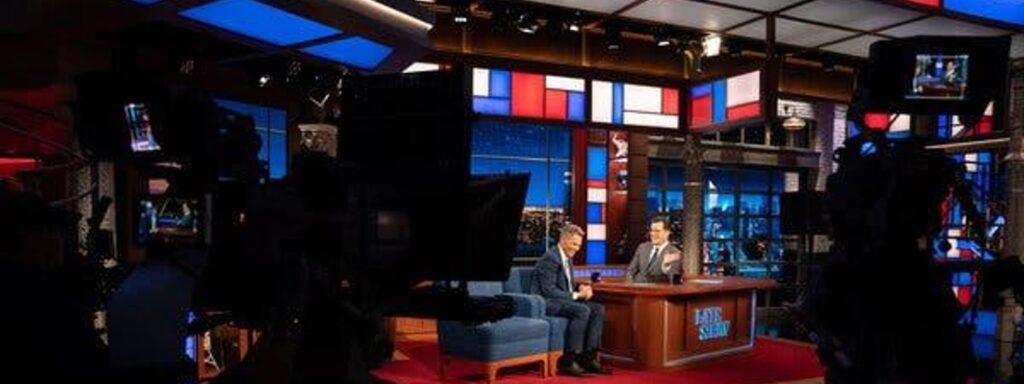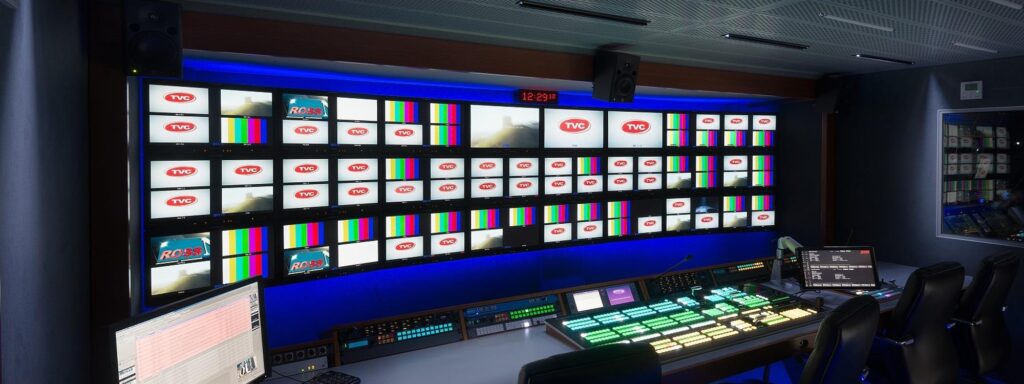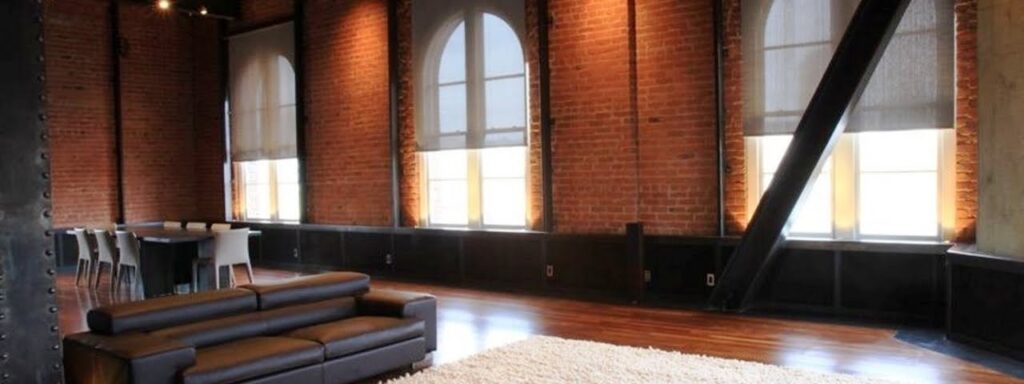Paradigm shift:
Recent advances in streaming technology, software and the capabilities of personal digital devices have set the stage for a paradigmatic shift in our perception of, and approach to, virtual, streaming large multi-location meetings – what we call Virtual Town Halls (VTH).
Also, there are some other powerful drivers – including concern about the cost, logistics, time (away from family & clients) and environmental impact of in-person meetings – that are accelerating the push for more effective virtual gatherings.
This deck outlines the key creative and technical considerations with some recommendations for implementation.
With an updated approach, companies should be able to focus more resources on content and avoid getting mired in the technical aspects of delivery. In terms of look and feel, we are proposing a shift from “inter-office teleconference” to a more engaging, seamlessly interactive format that is more likely to grab and sustain the attention of your participants.
Pickerel Pie has extensive experience in both live-event and studio-based production, streaming media as well as deep knowledge of corporate branding.

Creative
The goal of almost any large meeting is to use the cultural voice of the brand to deliver key takeaways and make them memorable. Virtual Town Halls should be compelling, urgent, clever, substantial, interactive, inclusive, accessible, unpredictable and thematically coherent.
The expectations we bring to terms like “teleconference” and ”live-streaming” and, even, “Town Hall” have calcified around antiseptic, badly-lit, cavernous sounding, deer-in-headlights administrative transmissions from one grim office space to another.
What’s possible though – and what we describe in this proposal – is the production of an exciting live event, including relaxed and engaged host(s), guests (both in the “studio” and in remote locations around the globe) and pre-produced roll-ins. There should be a propulsive sense of urgency to the broadcast, a story being told from many perspectives, including – live! – from unpredictable viewers and other interactive formats.
Think the Daily Show with more data and (slightly) less snark. Fun but serious in intent. Urgent but also unpredictable.

Production Methodology
Teleconference vs. broadcasting
Despite significant recent technological and system advances, many large, multi-office companies continue to utilize their existing IT infrastructure and, often longstanding relationships with traditional network providers (e.g. Cisco) to produce virtual meetings. At its core what we are proposing is a move away from this model towards well established live video production practices (a shorthand for this mode of production is ”broadcast”) combined with enterprise-level content delivery networks.
Teleconference technologies like WebEx and Zoom are built primarily around a one (location)-to-one interaction while the Town Hall format (typically) is a one-to-many broadcast.
Features that have been solved for and are now intrinsic to broadcast production – e.g. the ability to live-switch multiple camera angles at the broadcast location, switching to other (and offsite) locations, use of graphics, prerecorded video roll-ins, live polling, Q&A and other interactive elements, – must be shoehorned, often awkwardly, into the traditional teleconference system. Also, content delivery specialists like Vimeo and Brightcove have much more advanced interfaces, enhancing and simplifying the user experience.
IT departments gravitate towards teleconference because they can utilize existing infrastructure and knowledge as well as the security appeal of a closed ecosystem. But, enterprise-level Content Delivery Networks have solved the security piece, and they don’t complicate video production,, allowing the creator to focus more attention on content.
The Broadcast approach
Virtual town halls produced in the broadcast model can be described in four phases: •Capture (cameras, sound, live switchers, etc.) •Remotes (guests/content from other locations) •Interactivity (polls and questions) •Distribution (how the show is delivered “streamed” to the audience)
To produce top-notch Virtual Town Halls, companies should use a hybrid of the latest video production protocols combined with web-tech tools, including live feeds from remote locations, interactivity (Skype for broadcast, Poll Anywhere, email) and enterprise-level streaming for distribution.
Much like Global Partner meetings, the VTH can (and, perhaps, should) be produced anywhere. By basing the VTH around industry standard practices for location video production (the studio “Flypack”) , Companies can hire local crews who produce events/studio shoots every day. Companies like PSAV, Bexel and NEP can provide expert crew and appropriate gear all preconfigured for location work.
Enterprise-level hardware from Skype is now commonly used by all the major networks to facilitate remote reports. And, finally, content delivery specialists Brightcove and Vimeo offer white-label, scalable, secure Content Deliver Networks that will allow the user to watch the VTH from their desk or secure VPN connection from home or phone.
By not being locked into one production methodology companies will be able to tap the most useful and cost-effective features from the most suitable solution/partner in each production phase.

Location & Production Design Considerations
Locations
By approaching the VTH like a live broadcast production, the event can be based anywhere your talent happens to be. Tools like Peerspace and Splacer make location searching and securing easier.
Some possible options :
Traditional Sound Stages and Theaters Studios & lofts Meeting and Event type spaces • Hotel conference rooms • Nightclubs and restaurants
Production Design
Production design is anything that contributes to the overall visual look of the production, it can include the setting, backdrops, special lighting, and props. In addition to the look desired, production design is defined by budget and location choice.
Our recommendation is to develop a look that’s branded and repeatable but flexible enough that doesn’t lock you into one venue or type of space.
